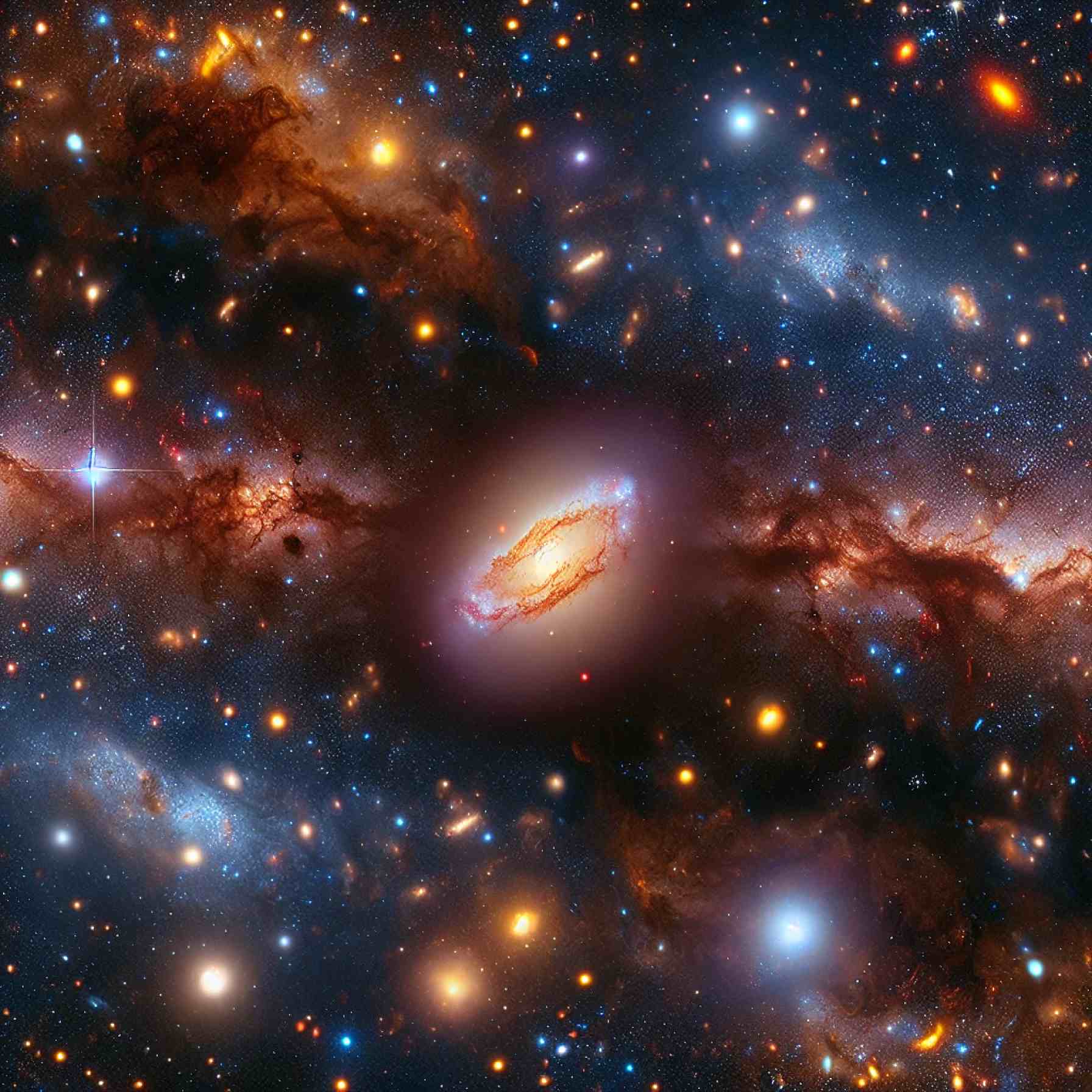- UMa3/U1, located in Ursa Major, perplexes astronomers as it may be the smallest known galaxy or an ancient star cluster.
- With just 20 light-years in diameter and about 60 stars, UMa3/U1 contrasts with massive galaxies like the Milky Way.
- Despite its size, it weighs 16 solar masses, indicating potential hidden mysteries at its core.
- UMa3/U1 challenges current definitions, straddling the line between galaxy and star cluster due to its structure and composition.
- The object has a stellar movement stability suggesting a lifespan of billions of years, typical of star clusters.
- Advanced telescopes, such as the Vera Rubin Observatory, may soon clarify its nature.
- UMa3/U1 prompts deeper astronomical inquiry, reflecting the universe’s complexity and potential to reshape our cosmic understanding.
In the cosmic depths of the constellation Ursa Major lies an enigmatic celestial entity that has astronomers scratching their heads. Known as UMa3/U1, this object could either claim the title of the smallest galaxy ever discovered or simply be an ancient star cluster, leaving experts in the field in a delightful dilemma.
UMa3/U1 baffles with its composition and behavior, raising an eyebrow at every turn. With a diminutive diameter of just 20 light-years and a star count that barely reaches 60, it stands as a stark contrast to sprawling giants like the Milky Way. Yet, despite its petite stature, it boasts a weight of 16 solar masses, hinting at an intriguing secret cloaked within its core.
Galaxies, as we know them, are sprawling assemblies governed by dark matter, their stars orbiting in complex gravitational dances. Star clusters, like the glittering Pleiades, are simpler beasts—tight-knit families of stars with little to no dark matter influence. But UMa3/U1 sits awkwardly in between, defying neat categorization.
As astronomers scrutinize this cosmic riddle, they find themselves questioning foundational definitions. Is a galaxy marked by its structure or its substance? UMa3/U1 seems to toy with these boundaries, daring observers to rethink conventional wisdom.
Early tests have been revelatory. The stability of this entity, confirmed by stellar movement analysis, points to a lifespan reaching into the billions of years, typical of a star cluster. Yet, the star density pattern within is perplexingly even, a hallmark shared by clusters. What lurks most curiously, however, might be invisible masses at its core—elusive remnants that evade current detection.
Yet, as data accumulate and instruments advance, the line it treads might soon clarify. The arrival of cutting-edge telescopes like the Vera Rubin Observatory could unravel this cosmic mystery, shedding light on its true nature.
For now, UMa3/U1 remains a fascinating conundrum, a tiny beacon on the outskirts of our galaxy, quietly posing profound questions to astronomers. Whether it’s the tiniest galaxy or the oldest star cluster, it stands as a testament to the universe’s capacity to surprise and enthrall, nudging us toward a broader understanding of the cosmos and our definitions within it.
Unraveling the Mystery of UMa3/U1: Galaxy or Ancient Star Cluster?
Decoding UMa3/U1: A Cosmic Puzzle
Located in the constellation of Ursa Major, the enigmatic UMa3/U1 is at the heart of an intriguing astronomical debate. This object may be the smallest galaxy ever discovered or simply a peculiar ancient star cluster. Let’s dive deeper into this cosmic mystery, exploring what makes UMa3/U1 so unique.
Characteristics and Composition
– Size and Structure: UMa3/U1’s diameter is only 20 light-years, with approximately 60 stars. In comparison, the Milky Way has a diameter of up to 200,000 light-years and contains over 100 billion stars.
– Mass: It has a mass of 16 solar masses, suggesting potential hidden mass in its core, possibly dark matter or other unknown entities.
– Density: The star density pattern in UMa3/U1 is unusually even, akin to star clusters, yet its stability is more characteristic of galaxies, adding to the ambiguity about its classification.
Cutting-Edge Research and Technology
The anticipation around UMa3/U1 is set to increase with the upcoming Vera Rubin Observatory, designed to capture wide-field images of the sky. It promises enhanced insight into these faint and mysterious objects, allowing astronomers to discern more about their characteristics and behaviors.
Controversies and Debates
– Galaxy vs. Star Cluster: The primary debate hinges on whether UMa3/U1 should be classified based on its structural features, mass, or content (e.g., dark matter presence).
– Definitions in Astronomy: As UMa3/U1 challenges existing definitions, this could potentially lead to a broader reevaluation of how celestial objects are categorized.
Implications & The Future of Astronomical Studies
Understanding UMa3/U1’s nature could reshape our understanding of galaxy formation, the role of dark matter, and the life cycles of celestial structures. This insight may influence how future objects are classified and pave the way for new cosmic discoveries.
Actionable Tips for Aspiring Astronomers
1. Stay Informed: Follow updates from observatories like Vera Rubin Observatory to stay abreast of the latest astronomical discoveries and insights.
2. Engage in Amateur Astronomy: Use telescopes and star maps to explore celestial constellations like Ursa Major, where UMa3/U1 resides.
3. Join Astronomy Networks: Join forums and communities to discuss these topics with others passionate about space research to enhance your learning.
Concluding Thoughts
UMa3/U1 is a compelling testament to the complexities that exist beyond our immediate cosmic neighborhood. Whether it proves to be the tiniest galaxy or an ancient star cluster, it remains a symbol of the universe’s ability to challenge and inspire us. Continue exploring the cosmos with curiosity, as each mystery unraveled adds depth to our understanding of the vast universe that surrounds us.
